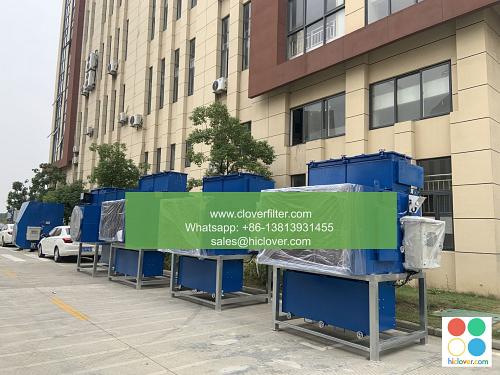Air Filter Cleaning for DIY Spaces

As a DIY enthusiast, maintaining a clean and healthy workspace is crucial for productivity and overall well-being. One often overlooked aspect of DIY space maintenance is air filter cleaning. In this article, we will delve into the importance of air filter cleaning and provide a step-by-step guide on how to clean your air filters, highlighting various application areas and indoor air quality benefits.
Why Air Filter Cleaning is Essential for DIY Spaces
Air filters play a critical role in maintaining good indoor air quality by capturing dust, pollen, and other airborne particles that can aggravate allergies and respiratory issues. Over time, these filters can become clogged, reducing their effectiveness and increasing the risk of indoor air pollution. Regular air filter cleaning can help prevent this and ensure a healthier workspace. Additionally, clean air filters can improve the efficiency of your heating, ventilation, and air conditioning (HVAC) system, leading to energy savings and reduced maintenance costs.
Application Areas for Air Filter Cleaning
Air filter cleaning is not limited to residential spaces; it is also essential for various commercial and industrial application areas, including:
* Workshops and garages where dust and debris can accumulate quickly
* Painting and coating areas where chemical fumes and particulate matter can be present
* Woodworking and carpentry areas where sawdust and wood particles can be airborne
* Laboratories and clean rooms where air purity is critical
A Step-by-Step Guide to Air Filter Cleaning
Cleaning your air filters is a relatively simple process that can be done with basic tools and materials. Here’s a step-by-step guide:
1. Turn off the power to your HVAC system or air purifier to prevent any accidental start-ups.
2. Remove the filter from its housing or mounting bracket. This may require a screwdriver or other tool.
3. Inspect the filter for any visible debris or damage. If the filter is damaged, it may need to be replaced.
4. Use a vacuum cleaner or soft-bristled brush to gently remove any loose debris from the filter surface.
5. Wash the filter with mild soap and warm water. Avoid using harsh chemicals or abrasive materials that can damage the filter.
6. Rinse and dry the filter thoroughly to prevent any water spots or mineral deposits.
7. Reinstall the filter and turn on the power to your HVAC system or air purifier.
Best Practices for Air Filter Maintenance
To ensure optimal indoor air quality and air filter performance, follow these best practices:
* Check and clean your air filters regularly, ideally every 1-3 months.
* Replace filters as recommended by the manufacturer or when they become damaged.
* Use high-quality filters that are designed for your specific application and HVAC system.
* Monitor indoor air quality using air quality sensors or indoor air quality monitors to ensure your air filters are working effectively.
By following these guidelines and incorporating air filter cleaning into your regular DIY space maintenance routine, you can improve indoor air quality, reduce energy costs, and create a healthier workspace for yourself and others. Remember to always prioritize indoor air quality and take a proactive approach to air filter maintenance to ensure a safe and productive DIY space. Prompt

